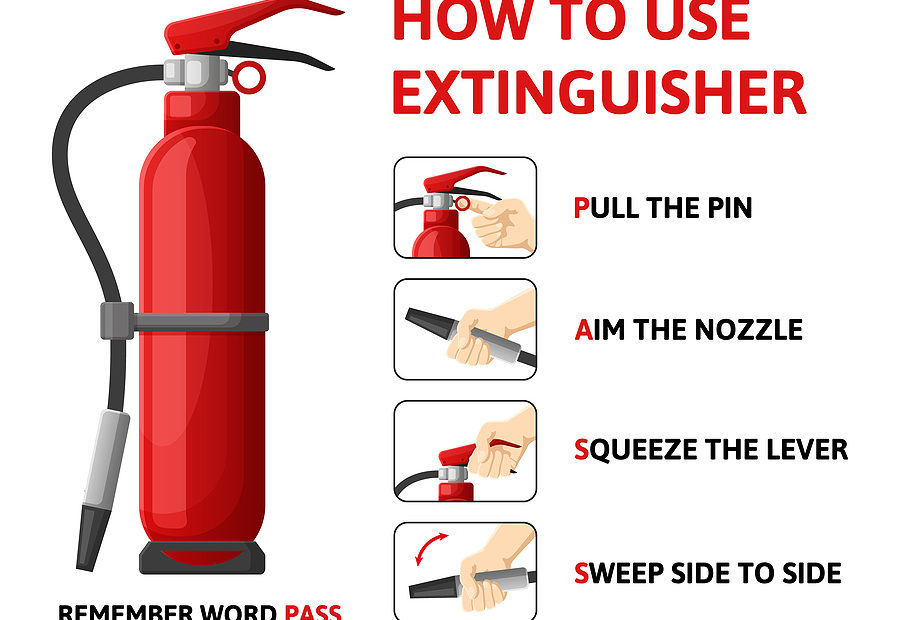The Occupational Safety and Health Administration (OSHA) cites a fire as the most typical unexpected event that small businesses need to prepare for. Extinguishers may be beneficial instruments in the case of a fire in the workplace, whether it be a tiny blaze that needs to be extinguished or an enormous blaze that must protect escape routes. The Occupational Safety and Health Administration (OSHA) mandates that companies provide comprehensive training to their employees on how to use an extinguisher correctly, effectively assess a situation, and determine when it is safest to evacuate the building. At the very least, every year, OSHA mandates that workers get training in the proper operation of fire extinguishers.
The PASS method is a straightforward approach to fire extinguisher training that may be used with staff members:
- Remove the safety pin from the fire extinguisher.
- Position the nozzle of the hose so that it points down toward the base of the fire.
- To discharge the extinguishing agent, squeeze the handle where it says to.
- Move the nozzle around at the bottom of the flames in a side-to-side motion until the fire is extinguished.
The training only finishes after one is familiar with utilizing a fire extinguisher correctly. Employees who respond to a fire should also be instructed to adhere to the process outlined in the following sentence:
- If it is safe, immediately activate the fire alarm or contact the fire department.
- Before approaching the fire, it is essential to plan an escape path free of dangers such as flames, extreme heat, and smoke. It would help if you didn’t let this escape route become closed.
- If the fire starts again, use the PASS technique to discharge the extinguisher and get out of the area as quickly as possible.
- If the fire cannot be put out with the extinguisher, immediately escape the building.
- If the fire escalates beyond what can be controlled safely, immediately escape the area.
Extinguishers can only effectively put out moderate to low-level blazes. Therefore, employees should know when and how to evacuate the area if a fire gets out of control, or the surrounding environment becomes too hazardous. Workers are required to follow evacuation protocols promptly and should not attempt to battle the fire with an extinguisher if any of the following criteria are present:
- The fire is far more significant than expected. If the fire comprises volatile solvents, is partially concealed behind a wall or ceiling, cannot be reached while standing, or spans more than 60 square feet of area, then you should call 911 immediately.
- It is not safe to be outside right now. Because of the levels of smoke, it is difficult to put out the fire without some respiratory protection.
- The atmosphere is either very hot or smokey. Because the radiated heat may be felt, it is difficult to go close enough to a fire to use an extinguisher effectively (about 10-15 feet). To protect oneself from heat or smoke, it is essential to crawl on the floor. There is hardly much visibility.
- The routes of egress have been obstructed. In addition, the fire has not been controlled, and heat, smoke, or flames block viable escape routes.
